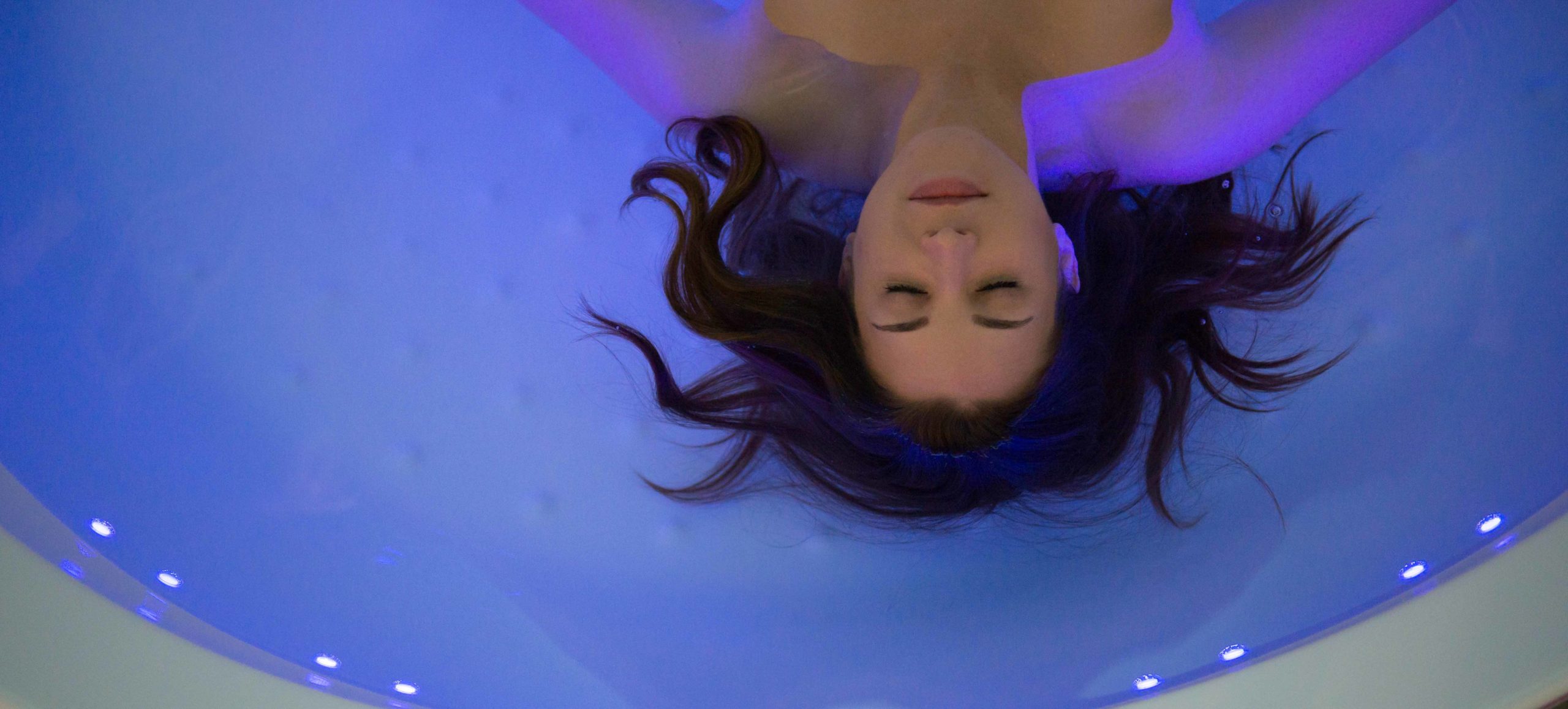A decade ago, I had the privilege of floating in the Dead Sea, a surreal and beautiful experience I thought I’d likely never have again. And so far, I haven’t. But last week I came pretty close.
This time, I was in Highlands Ranch instead of the Middle East. And rather than floating in a sea, I was suspended in a large, clamshell-like pod called a flotation tank, filled with 10 inches of water that is 30 percent magnesium salt (roughly the same salinity as the Dead Sea).
Both experiences were downright therapeutic.
The Health Benefits of Floating
In fact, therapy is the main idea behind the flotation tank, which allows you to relax so deeply that you either fall asleep or hover in a meditative state that studies have shown to calm your nervous system and reduce cortisol, the stress hormone. Other studies suggest floating might alleviate chronic pain, lower blood pressure, relieve PTSD symptoms, and boost sports recovery and performance (Tom Brady and Steph Curry are both float tank fans; watch Curry’s flotation commercial here).
So, I wondered before my float, why are float tanks so relaxing? How is it better than a good, old-fashioned nap? The answer is sensory deprivation. The water in the tank is kept at roughly the same temperature as your skin, which means you don’t feel any differentiation. The act of floating allows your body to relax without any pressure points—especially helpful for chronic-pain sufferers. Then, if you choose, you can close the pod lid completely, shutting out sound and light.
What to Expect
Before you panic at the thought (too late?), here’s the full scoop. At Inngi Float—the beautiful, spa-like Highlands Ranch studio I visited—the light- and sound-deprivation is optional. If that wigs you out, you can opt for lights in the color of your choosing, as well as one of 14 soothing soundtracks, such as rippling water, a dash of rain or whale songs. Or you can do what I did and bookend your float with light and sound during the first and last five minutes and sensory deprivation for the rest. Also key: There’s a call button inside the pod in case of emergency. Those who are germ averse will be glad to know the pod is completely drained between each float, and the water is filtered four different ways—twice.
What should you think about while floating? That’s up to you. Some people, like Inngi float co-owner Erik Skaalerud, fall asleep almost instantly. His wife and Inngi co-owner Wendy Skaalerud rarely sleeps in the tank; instead, she often focuses on the two priorities of her day to gain perspective on them. “I try to let my mind be where it needs to be,” she says. “Some people problem-solve; others meditate.”
As for me, I spent the first 10 minutes thinking about the experience itself—how bizarre it was that I was floating with no effort, noticing how my body was positioned in the water, feeling where my muscles were tense. Then, my body relaxed, and with no external stimuli, my mind wandered. I contemplated a few things, prayed a bit, and then I’m not sure. I might have fallen asleep or I might have been in that hover state. When my float time ended, I couldn’t even tell if it felt like a long time or a short time. Either way, I was thoroughly relaxed, and after a rinse off in the shower next to the pod, my skin felt heavenly.
And I was thankful to know that even if I never make it back to the Dead Sea, I can float my troubles away right here in my own backyard.
For more info on Inngi Float, visit inngifloat.com.


